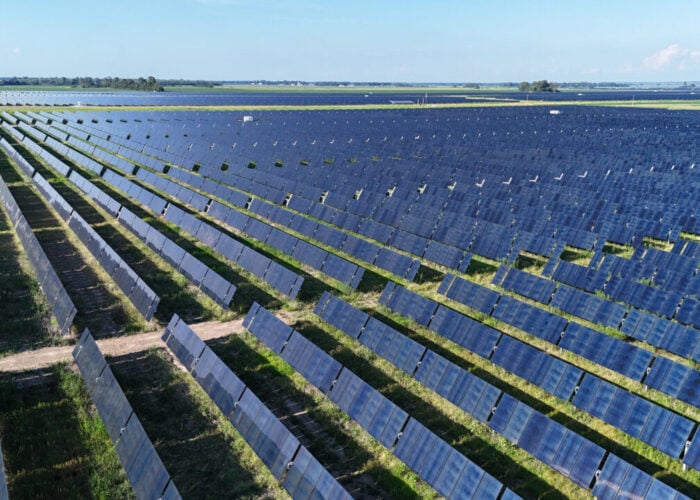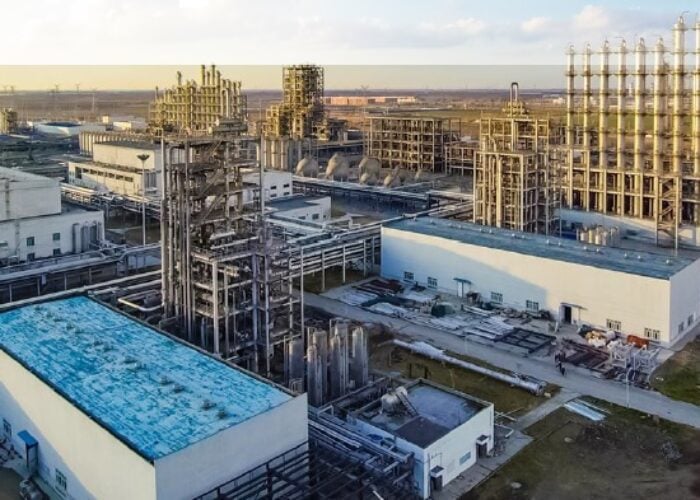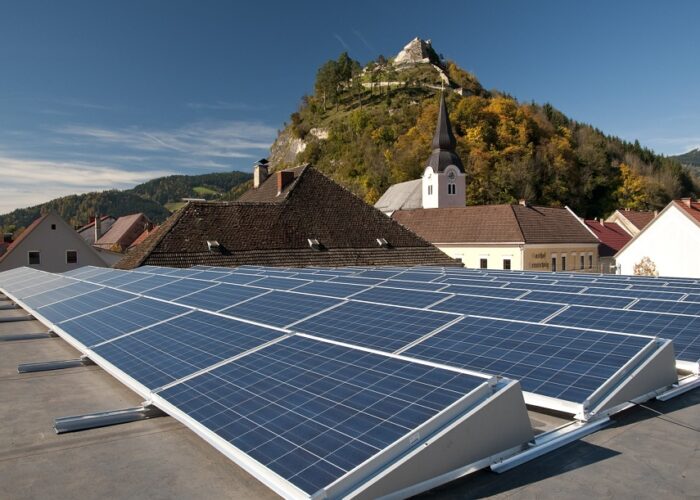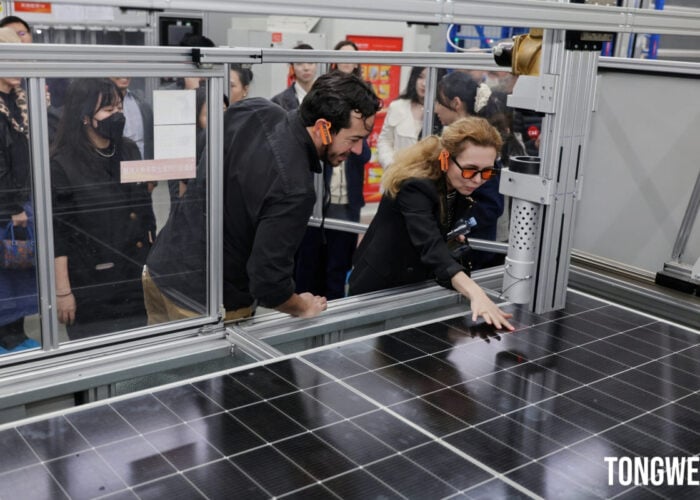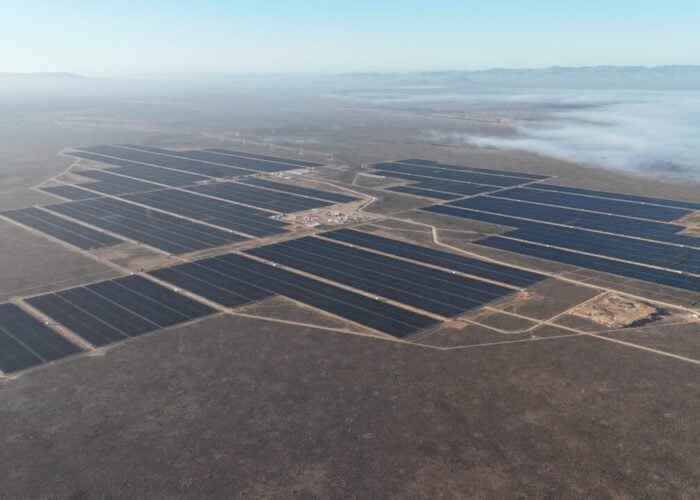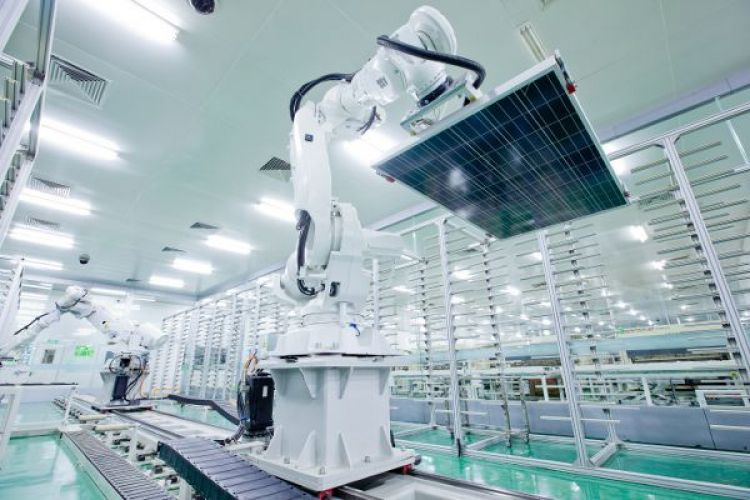
Leading Chinese module manufacturer JinkoSolar shipped 99.6GW of products in 2024, a record for the company, but its operations delivered net losses for the first time in the last five years.
In its latest financial results, covering the fourth quarter of 2024, JinkoSolar announced it had shipped 25.2GW of modules and 1.2GW of cells and wafers, total shipments that are a 2.1% increase over the shipments of the third quarter, and a 5% decrease compared to the fourth quarter of 2023.
Try Premium for just $1
- Full premium access for the first month at only $1
- Converts to an annual rate after 30 days unless cancelled
- Cancel anytime during the trial period
Premium Benefits
- Expert industry analysis and interviews
- Digital access to PV Tech Power journal
- Exclusive event discounts
Or get the full Premium subscription right away
Or continue reading this article for free
Regardless, the company’s strong shipments throughout the year helped deliver end-of-year module shipments of 92.9GW, alongside 6.7GW of cells and wafers, a collective 19.2% increase over the total shipments completed in 2023.
These trends are shown in the graph below, which also highlights that the fourth quarter of 2023 saw the greatest total shipments of products, and that both 2023 and 2024 followed the same pattern of increasing shipments in each quarter.
However, these strong shipment figures did not deliver equally strong financial results, with the company’s 2024 revenue falling to US$12.6 billion, a 22.3% decrease over the previous year.
This was driven by a combination of lower profits – US$1.37 billion in 2024, a 47.4% year-on-year decline – and operations making a loss of US$469.1 million in 2024, compared to profits of US$840 million in 2023.
“The ongoing imbalance between supply and demand led to a decline in module prices during the year,” explained JinkoSolar chairman and CEO Xiande Li. “Combined with the impact of short-term factors such as the elimination of obsolete production capacity, our profitability dropped significantly year-on-year.
“Gross margin was 10.9% in 2024, compared to 16.0% in 2023 and net income was US$7.9 million,” Li added. “Module shipments were 25.2 GW in the fourth quarter, in line with our guidance.”
Global supply chain challenges
Perhaps the clearest explanation for the disparity between module shipments and profitability is the increasingly hostile relationship between the American and Chinese governments, best exemplified by president Trump’s increase of tariffs on Chinese solar products to 60% in February.
While this particular tariff is not considered in JinkoSolar’s 2024 financial results, it demonstrates much of the protectionist rhetoric used by Trump during and after his campaign in late 2024, and JinkoSolar sought to sell more of its products to domestic markets in the latter stages of 2024, cutting into its profits.
“As over 50% of modules were shipped to the domestic market where prices were lower, and the proportion of higher-price overseas orders declined sequentially, both module delivery prices and profits decreased sequentially,” explained Li.
The graph above shows how JinkoSolar’s profits and losses, in green, have moved in the opposite direction to its module shipments, in red. The blue line also indicates global average selling price (ASP) of modules, using data from the International Renewable Energy Agency (IRENA), for which 2023 is the most recent data available, and show that ASP fell by US$40/MW between 2022 and 2023, a significant shift considering global module sales are measured in gigawatts.
There is also the continued issue of oversupply in the global solar supply chain, with official figures showing China exported 235.9GW of modules in 2024, a 13% year-on-year increase, that will do little to help module prices rebound.
This combination of selling modules domestically, where there are lower prices, and a global decline in module prices in recent years, helped drive poor performances in many of JinkoSolar’s financial metrics. Its net income attributable to shareholders fell by 98.3% year-on-year, while its gross margin was cut from 16% in 2023 to 1.09% in 2024.
Efficiency over scale in 2025
Looking ahead, JinkoSolar expects many of its operations to continue in the same vein in 2025. The company expects to ship 16-18GW of modules in the first quarter of 2025, in line with the 13GW and 20GW of modules shipped in the first quarters of 2023 and 2024, and to sell 85-100GW of modules in the entirety of 2025.
However, the company noted that it would take a more “cautious” approach to capacity expansion in 2025, and would not add new manufacturing capacity besides “upgrades to TOPCon technology”, suggesting that the company’s emphasis will be on delivering high-end technical performance, rather than sheer scale of products.
Indeed, JinkoSolar noted that, by the end of 2024, its average mass-produced n-type module reached a conversion efficiency of “nearly 26.5%”, and that it expects to increase this figure to 27% by the end of 2025.
“In the short term, as some leading PV companies face significant financial losses, the industry may have entered a deep adjustment period,” said Li of the global solar outlook for 2025. “Companies lacking competitive costs and efficiency, product and technology iteration capabilities and global expansion capabilities are likely to be phased out, helping restore supply and demand balance to the industry.”


